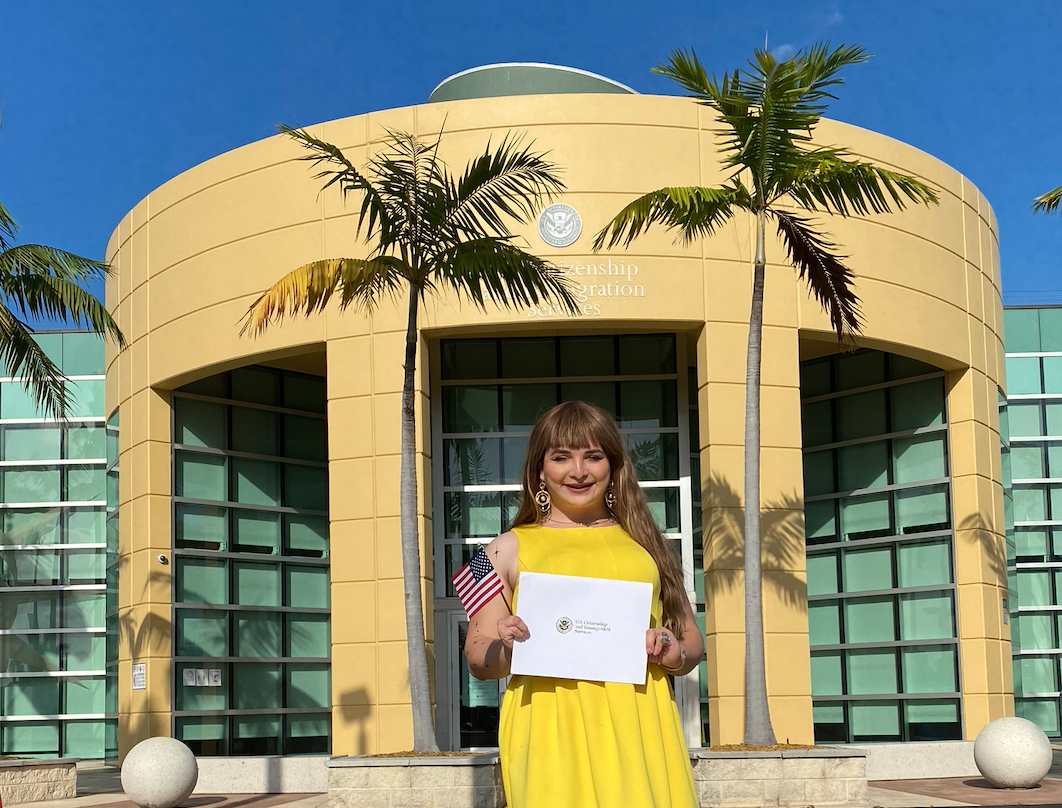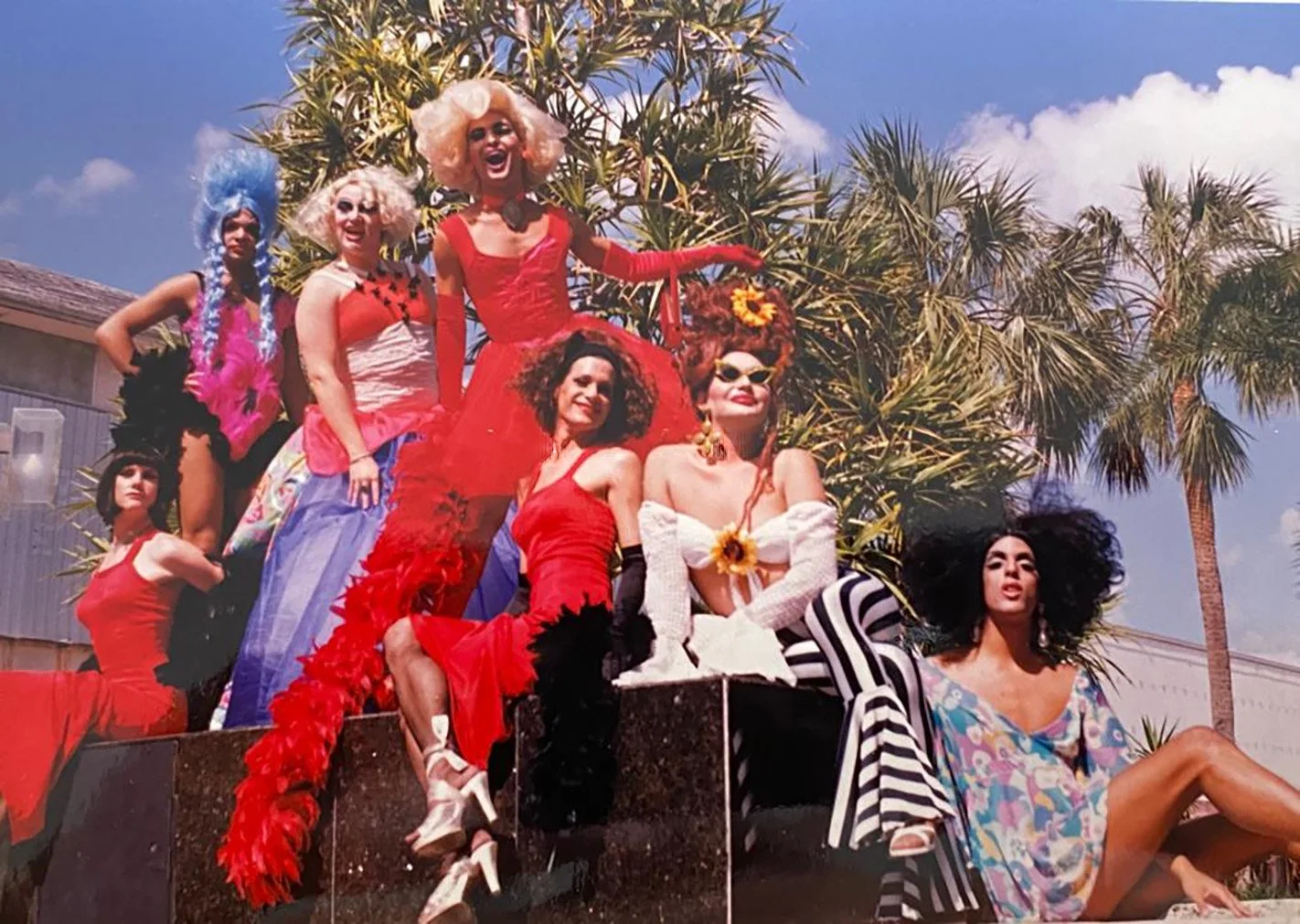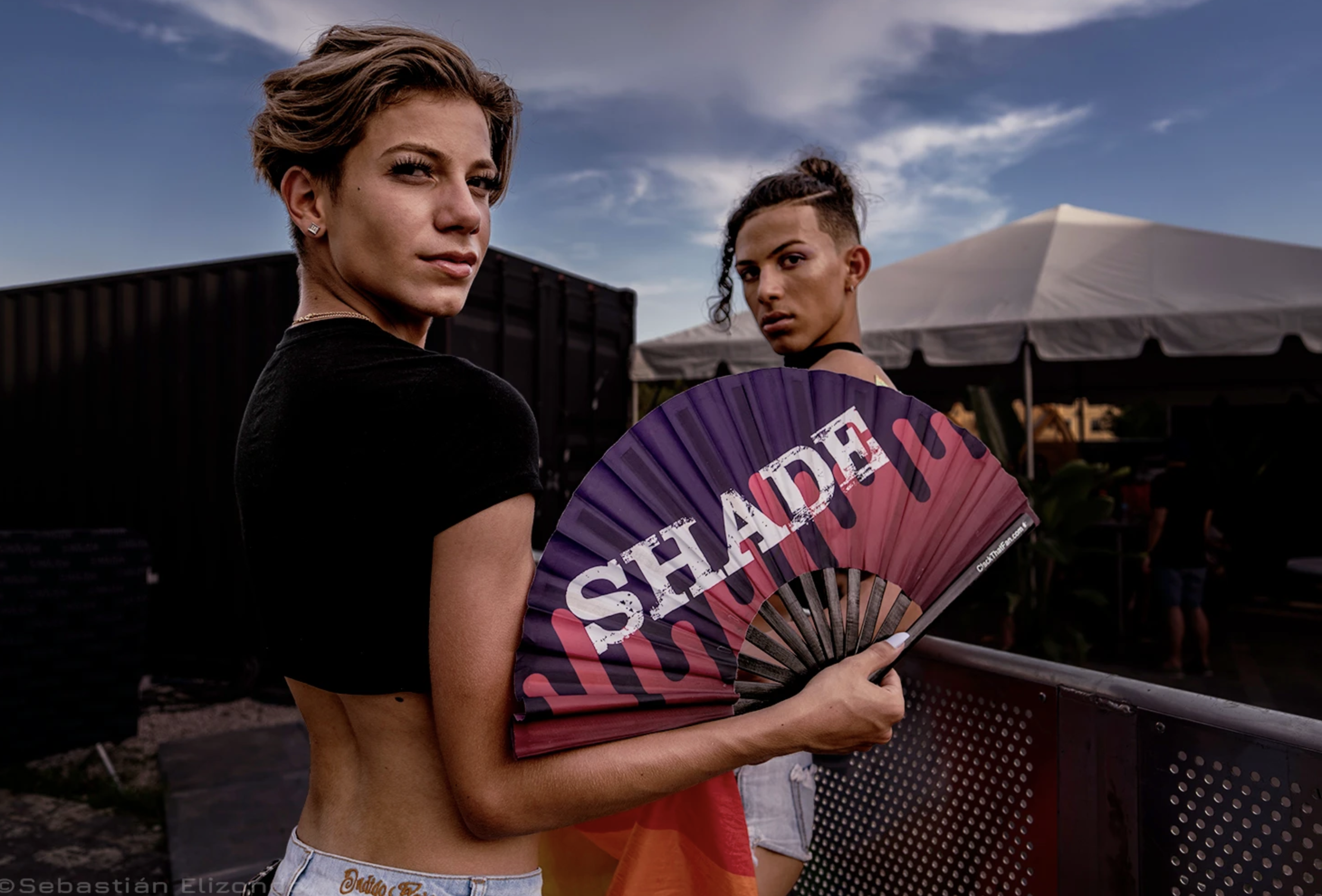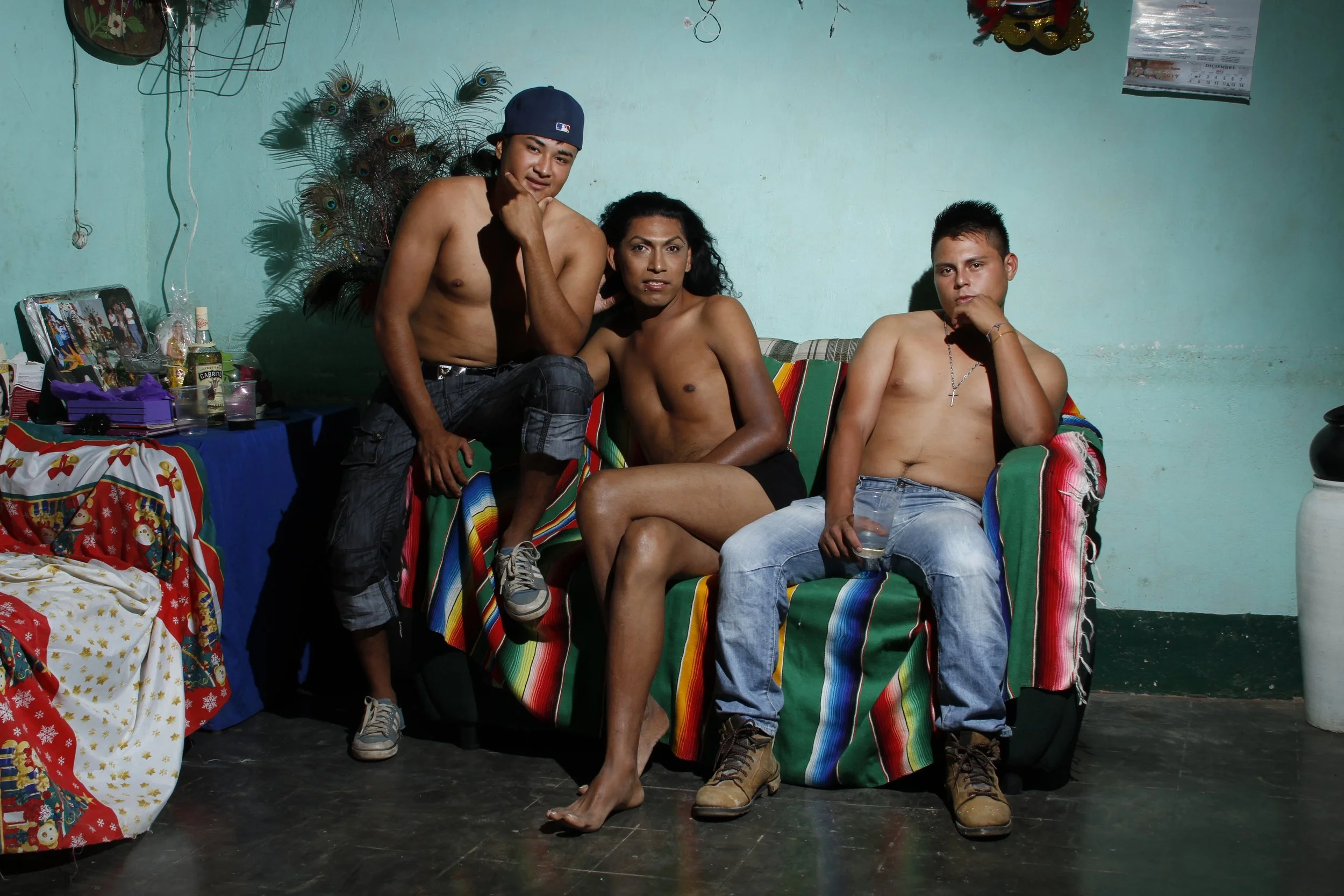Picturing Queerness in the Americas:
Visions of Identity, Resistance, and Community
In response to the invitation from Centro de la Imagen in Mexico City for the 30th edition of the prestigious Fotoseptiembre event, SoFLaFoto is honored to participate in the Red de la Imagen 2024, a collective initiative to organize Mexico's photography month. We proudly present the virtual group exhibition Picturing Queerness in the Americas: Visions of Identity, Resistance, and Community.
The visual representation of queer identities has become a vital aspect of contemporary art in Latin America, where a rich tapestry of experiences and narratives intersects with cultural, political, and social dynamics. Picturing Queerness in the Americas: Visions of Identity, Resistance, and Community explores how Latin American and Latinx artists capture, challenge, and celebrate the diversity of queer existence across the region.
In a context often dominated by machismo and conservative values, these artists have long pushed boundaries, creating spaces of visibility and resistance for LGBTQ+ communities. Their work not only reflects personal and collective experiences but also engages with broader discourses on gender, sexuality, and human rights.
This exhibition showcases a diverse array of artists from across the Americas, including the United States, Mexico, Argentina, Chile, Peru, and Cuba, offering a kaleidoscopic view of the LGBTQ+ experience through each artist's unique lens. The journey begins with Chilean photographer Paz Errázuriz, a pioneer known for her empathetic portrayal of marginalized communities. Following her legacy, prominent contemporary Mexican artist Yolanda Andrade captures intimate and candid moments that reflect the lives and experiences of LGBTQ+ individuals, particularly in Mexico City. Additionally, the works of the late Mexican trans visual artist and activist Viviana Rocco reimagine classical aesthetics through her Transrenacentista lens, blending Renaissance art with contemporary trans identities. These artists, alongside others featured in the exhibition, collectively present a rich and multifaceted exploration of queer identities, each contributing their distinct voice to this powerful narrative.
Picturing Queerness in the Americas: Visions of Identity, Resistance, and Community is a compelling exploration of visibility, identity, and resilience, celebrating the rich diversity of queer experiences across Latin America and beyond. This exhibition highlights the myriad ways in which artists challenge and honor queer identities, reflecting the evolving landscape of queer life in the region. Through their work, the artists mentioned earlier alongside Argentina-based Kenny Lemes; Peru-based Verónica Cerna; Mexico-based Bruno Bresani, Mitzi Flores, Óscar Sánchez Gómez, and Nelson Morales; and US-based Andreina Fuentes Angarita, Evelyn Sosa, Orestes González, Ali Miranda, Sebastián Elizondo, and Kike Arnal offer powerful testaments to the strength and beauty of queer communities. Their work deepens our understanding and appreciation of the cultural tapestry that defines the Americas while contributing to the ongoing struggle for equality, acceptance, and understanding.
All Images displayed in this exhibition are presented with their authors' full permission and authorization.
We are grateful to the artists for their contribution and for allowing their work to be shared on our platform.
Gallery
-

Paz Errázuriz
Errázuriz's work in La Manzana de Adán is notable for its intimate and respectful approach, capturing the humanity and resilience of her subjects amidst a backdrop of repression and societal stigma. The title of the series, referencing the "Adam's Apple," symbolizes gender identity and the struggle of these individuals to be seen and accepted in a society that often sought to erase their existence.
-

Yolanda Andrade
Yolanda Andrade's contribution to queer photography is significant, as her work provides visibility to a community that has historically been overlooked or misrepresented in mainstream media. Through her lens, Andrade invites viewers to reconsider their perceptions of gender and sexuality, ultimately fostering greater acceptance and understanding.
-

Oscar Sánchez Gómez
Familias Mexicanas is a photographic series where Sánchez Gómez focused his lens on exploring the intimate living spaces of several gay, lesbian, and transgender families within Mexico City. Through these images the photographer allows the viewer to witness private moments of families that have reinvented themselves, based on a variety of affective relationships that are constructed through daily cohabitation.
-

Evelyn Sosa
Evelyn Sosa's Havana Cuir (2021-ongoing) is more than just a documentation of the lives of younger generations identifying as queer in her native Havana, Cuba. Through her intimate and evocative approach to portraiture, Sosa delicately unveils the inner world of Valeria, one of the series' central figures. Her work is imbued with deep sensitivity, capturing the nuances of identity and existence within the vibrant yet complex cultural landscape of contemporary Havana.
-

Viviana Rocco
Viviana's Transrenacentista series reimagines iconic works from the Renaissance, such as Botticelli’s The Birth of Venus and Michelangelo’s The Creation of Adam, by incorporating trans and LGBTQ+ individuals as the central figures. Through these reinterpreted masterpieces, Viviana explores themes of identity, gender, and inclusion, blending the human emotionality of Renaissance art with modern expressions of LGBTQ+ life.
-

Kenny Lemes
Kenny Lemes has crafted a compelling portfolio of images that both celebrate and challenge perceptions of transgender and non-binary individuals. Through his bold and irreverent portrayal of gender-nonconforming bodies, Lemes invites viewers into the private and intimate spaces of his subjects, confronting preconceptions with a reflection of shared humanity.
-

Bruno Bresani
Latitude -1218 is a chilling chart of the Mexican land characterized by the denial of historical atrocities. In Mexico, 1218 men were killed victims of hate crimes in recent years, almost 65 murders per year, becoming the second place in the world with the highest number of crimes for homophobia.
Warning: Some bodies appear in their natural state
-

Andreina Fuentes Angarita
Transdecisión is a photographic essay on gender identity that examines the legal and psychosocial aspects necessary to create safe, legal environments for transsexual and transgender communities. This project explores civil guardianship in the recognition of gender identity through the photographic documentation of trans women who have faced social violence, including various forms of rejection, contempt, and institutional abuse.
-
Nelson Morales
In his photographic series Muxes (2016), Nelson Morales explores gender identity through highly stylized and theatrical imagery, captured in his native community in Oaxaca, southern Mexico. In the town of Juchitán de Zaragoza, the Zapotec people have long accepted—and celebrated—gender nonconformity. The Zapotec community, an ancient civilization, does not adhere to the traditional binary gender system.
-

Verónica Cerna
From Malleability to Desire: Lima, Cusco, Iquitos (2017) examines the body as both text and pretext in the performance of identity. This work explores the tension between conforming to and rejecting the repetitive codes of gestures that shape our understanding and construction of gender. The body becomes a battleground where individuals express their struggles to discover an image true to themselves, manifesting desires that dismantle and reconstruct masculinities and femininities according to their own will.
-

Kike Arnal
Kike Arnal’s photography focusing on the Bay Area trans community is a poignant example of how art can be used to advocate for social justice, celebrate diversity, and foster empathy. His images not only document the lives of transgender individuals but also contribute to the broader conversation about human rights and equality.
-

Mitzi Flores
Sementerxs, a project by Mexican photographer Mitzi Falcon, offers an intimate portrayal of the LGBTQ+ community through a series of portraits of queer construction workers. These individuals have left behind the gentle warmth of the tropics in their hometowns of San Andrés Tuxtla, Veracruz, and Xalpatláhuac, Guerrero, to work amid the steel and concrete of Mexico City’s construction sites.
-

Orestes González
New York's based artist Orestes Gonzalez presents his series Julio's House. The images within this series are not simply about recording the extravagant decor of the home or trove of mementos scattered throughout it, but rather about creating a portrait of his Cuban American uncle, one that deconstructs his preconceived narrative of Julio’s life he formed as a child, and reveals an entirely new biography Gonzalez only learned of when sorting through his uncle’s belongings with another family member.
-

Ali Miranda
Ali Miranda took an active part in the glittered life happening all around South Beach’s gay bars and private parties during the ‘80s and ‘90s, documenting it for a long time from his flâneur’s approach to life. Drag artists who appeared in Ali’s photographs are icons of the pastel and glitter life happening in Miami Beach. His work oscillates between capturing the ordinary aspects of daily life and the extraordinary moments of celebration, blending them to create a rich tapestry of queer life in South Beach.
-

Sebastián Elizondo
Miami-based photographer Sebastian Elizondo is known for his raw and expressive aesthetic, characterized by an intimate, almost intrusive perspective that compels viewers to engage with the realities of his subjects. His photographs of Miami's Pride Parade in 2019 vividly capture the vibrant colors, dynamic energy, and diversity of the participants. Elizondo's work focuses on candid moments, often emphasizing an artistically refined composition that draws the viewer's attention to individual expressions within the parade.
-

Yanahara Mauri
Children of Onan (2016) is a photographic series by Cuban artist Yanahara Mauri that delves into themes of feminism, sexuality, and eroticism, using the biblical story of Onan as a metaphor. Mauri's expressive and visually impactful photography deliberately manipulates the body, addressing sensitive issues within Cuban society.
Warning: Some bodies appear in their natural state


